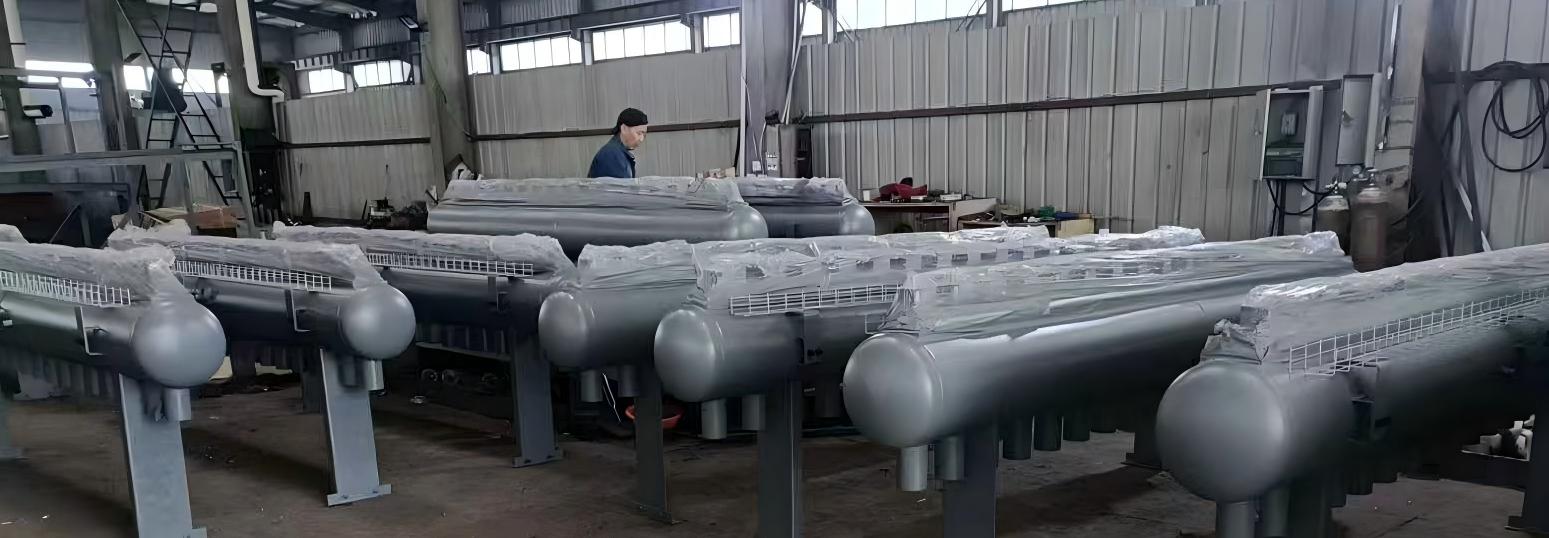I. Air Receiver

An air receiver, also known as a storage tank, air header, or pressure stabilizer, is an indispensable key component in pulse-jet baghouse dust collectors.
It is a pressure vessel, usually installed on the side or top of the dust collector housing. Its main function is to provide a stable and clean source of compressed air for the dust collector's pulse valves. It stores compressed air during the intervals when the pulse valves are inactive. When a pulse valve instantly opens upon receiving a cleaning signal, the air receiver can rapidly release a large volume of compressed air, generating a powerful purging air stream.
II. Core Functions of the Air Receiver
Stores Air Source, Ensures Instantaneous High Flow Supply
Pulse-jet cleaning is an instantaneous action (typically only 0.1~0.2 seconds). Within this very short time, a large amount of compressed air needs to be released to generate the cleaning power. If connected directly to the air compression pipeline, the air supply rate from the pipeline cannot keep up with the instantaneous demand of the pulse valve. The air receiver, by storing air in advance, effectively resolves this conflict between "instantaneous high demand" and "limited supply flow".
Stabilizes Pressure, Reduces Fluctuations
At the moment the pulse valve jets, without an air receiver, the system air pressure would experience severe fluctuations, affecting the effectiveness of the current jet and potentially interfering with the operation of other pulse valves. Acting as a buffer vessel, the air receiver effectively stabilizes the jetting pressure, ensuring each pulse is uniform and effective.
Separation and Settlement
Trace amounts of liquid water, oil droplets, and contaminants potentially present in the compressed air will partially settle at the bottom of the air receiver after entry, due to the reduced flow velocity and increased space. Therefore, air receivers are usually equipped with a drain valve that requires regular operation.
Distributes Airflow
A single air receiver is typically connected to multiple pulse valves, providing them with a centralized point for air source distribution.
III. Common Problems and Faults

Weak Blowing, Poor Cleaning Effect:
Most Common Causes: The air receiver volume is too small, or the air source pressure is insufficient.
Other Causes: Damaged pulse valve, clogged blowpipe or filter bags.
Excessively Rapid Pressure Drop:
Check for leaks (in pipelines, connections, pulse valve diaphragm).
Check if the air compressor's supply capacity is matched to the demand.
Internal Corrosion or Water Accumulation in Air Receiver:
Failure to Drain Regularly: Leads to internal corrosion; rust debris can clog pulse valves or damage diaphragms.
Ineffective Compressed Air Drying/Purification System: (e.g., dryer, filters).
Curious to learn more? Reach out to us today for expert answers!
Ms Yanice Yu
Qingdao Star Machine Technology Co.,Ltd.
Whatsapp/ Wechat ID: +8617852092959
Email:Yanice@starmachinechina.com